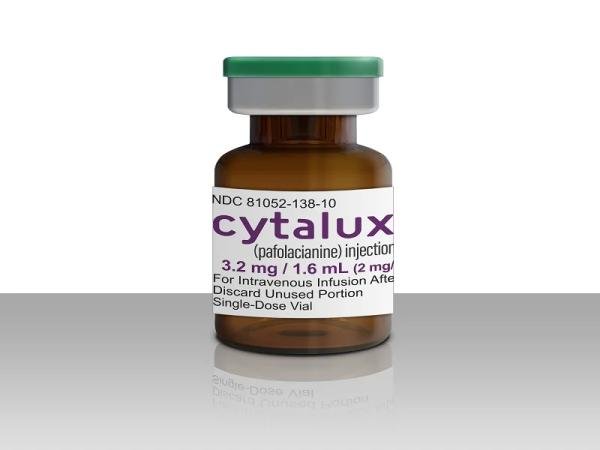Cytalux Side Effects
Generic name: pafolacianine
Medically reviewed by Drugs.com. Last updated on Jun 3, 2025.
Note: This document provides detailed information about Cytalux.
Applies to pafolacianine: intravenous solution Side Effects associated with pafolacianine. Some dosage forms listed on this page may not apply specifically to the brand name Cytalux.
Applies to pafolacianine: intravenous solution.
General adverse events
The more commonly reported adverse reactions have included nausea, vomiting, abdominal pain, flushing, dyspepsia, chest discomfort, pruritus, and hypersensitivity.[Ref]
Gastrointestinal
- Very common (10% or more): Nausea (15%), vomiting (5.8%), abdominal pain (2.7%)
- Common (1% to 10%): Dyspepsia
Hypersensitivity
- Common (1% to 10%): Hypersensitivity
Hypersensitivity was reported in 1% of patients; the type of hypersensitivity is not further defined.
Cardiovascular
- Common (1% to 10%): Chest discomfort, flushing
Chest discomfort was reported in 1% of patients; flushing was reported in 1.7% of patients.
Dermatologic
- Common (1% to 10%): Pruritus
Local
- Common (1% to 10%): Infusion reactions
Infusion reactions were reported in 2.4% of patients; these reactions included nausea, vomiting, abdominal pain, flushing, dyspepsia, chest discomfort, and pruritus.
See also:
References
1. (2021) "Product Information. Cytalux (pafolacianine)." Grand River Aseptic Manufacturing
More about Cytalux (pafolacianine)
- Check interactions
- Compare alternatives
- Drug images
- Dosage information
- During pregnancy
- FDA approval history
- Drug class: malignancy photosensitizers
Patient resources
Professional resources
Related treatment guides
Further information
Cytalux side effects can vary depending on the individual. Always consult your healthcare provider to ensure the information displayed on this page applies to your personal circumstances.
Note: Medication side effects may be underreported. If you are experiencing side effects that are not listed, submit a report to the FDA by following this guide.

